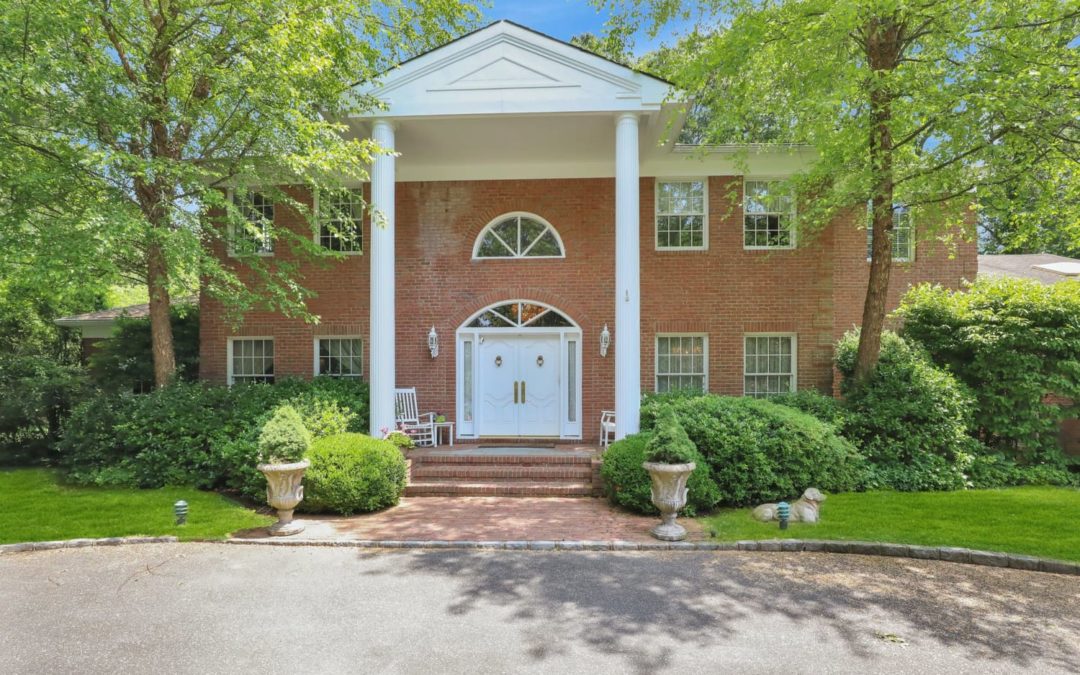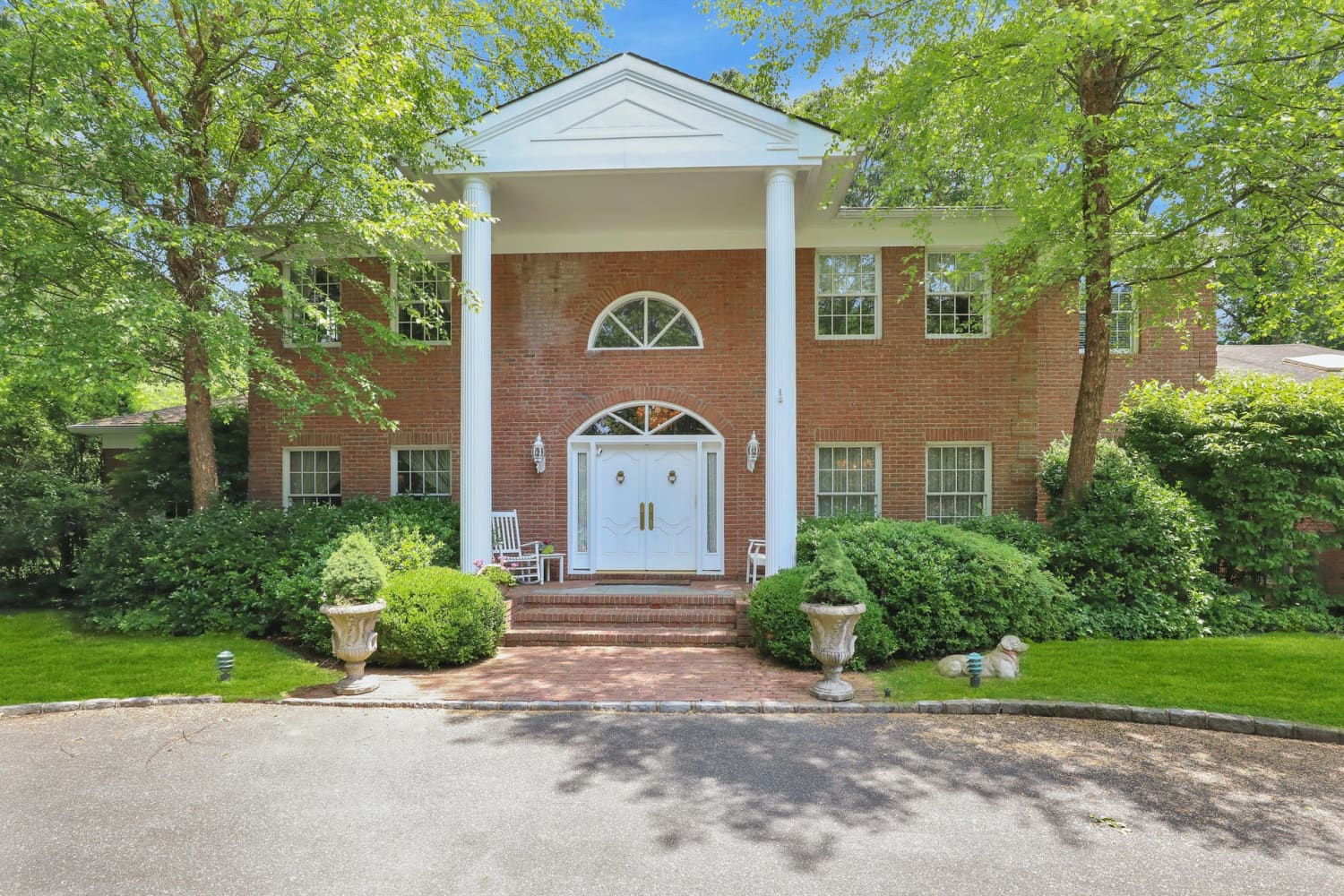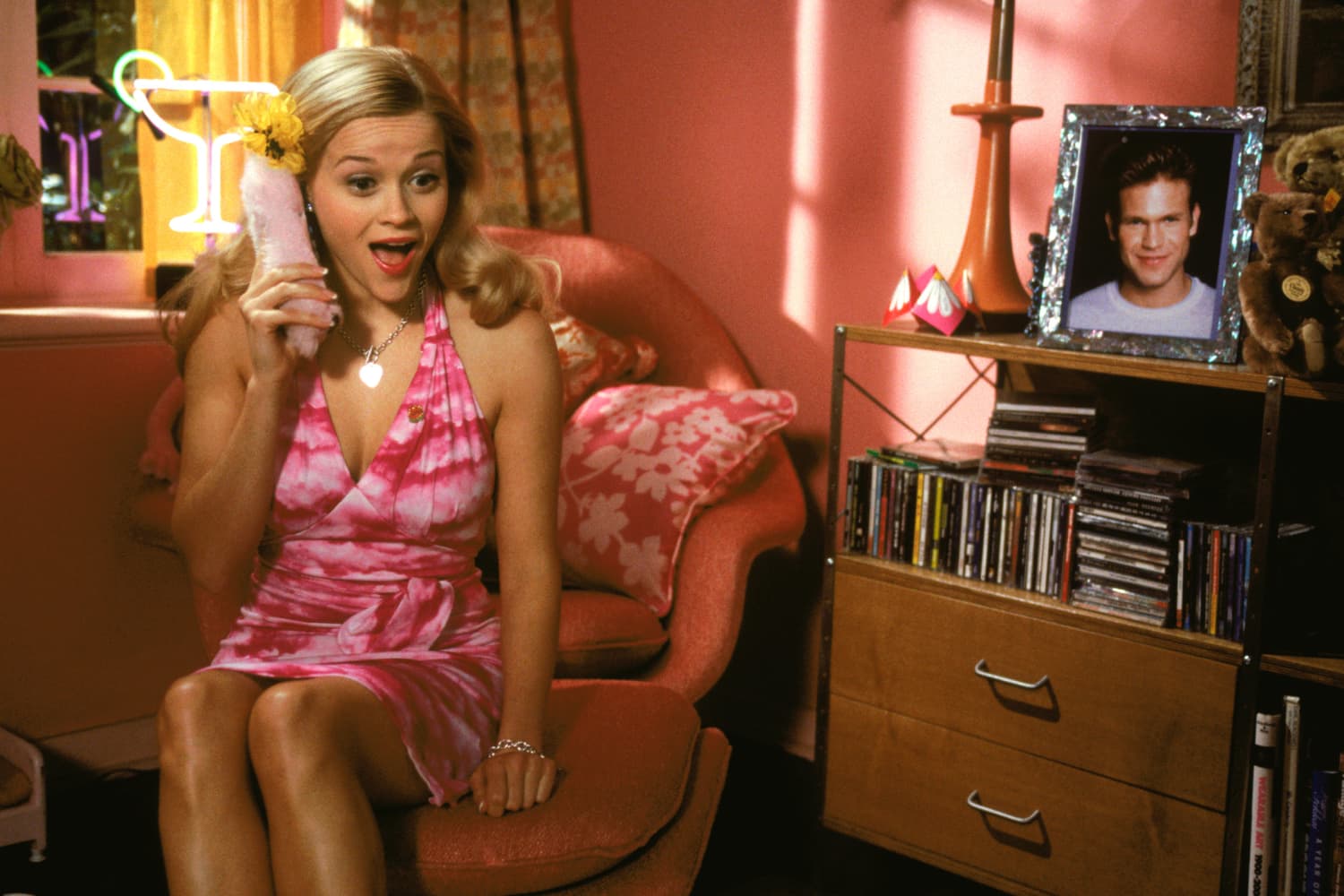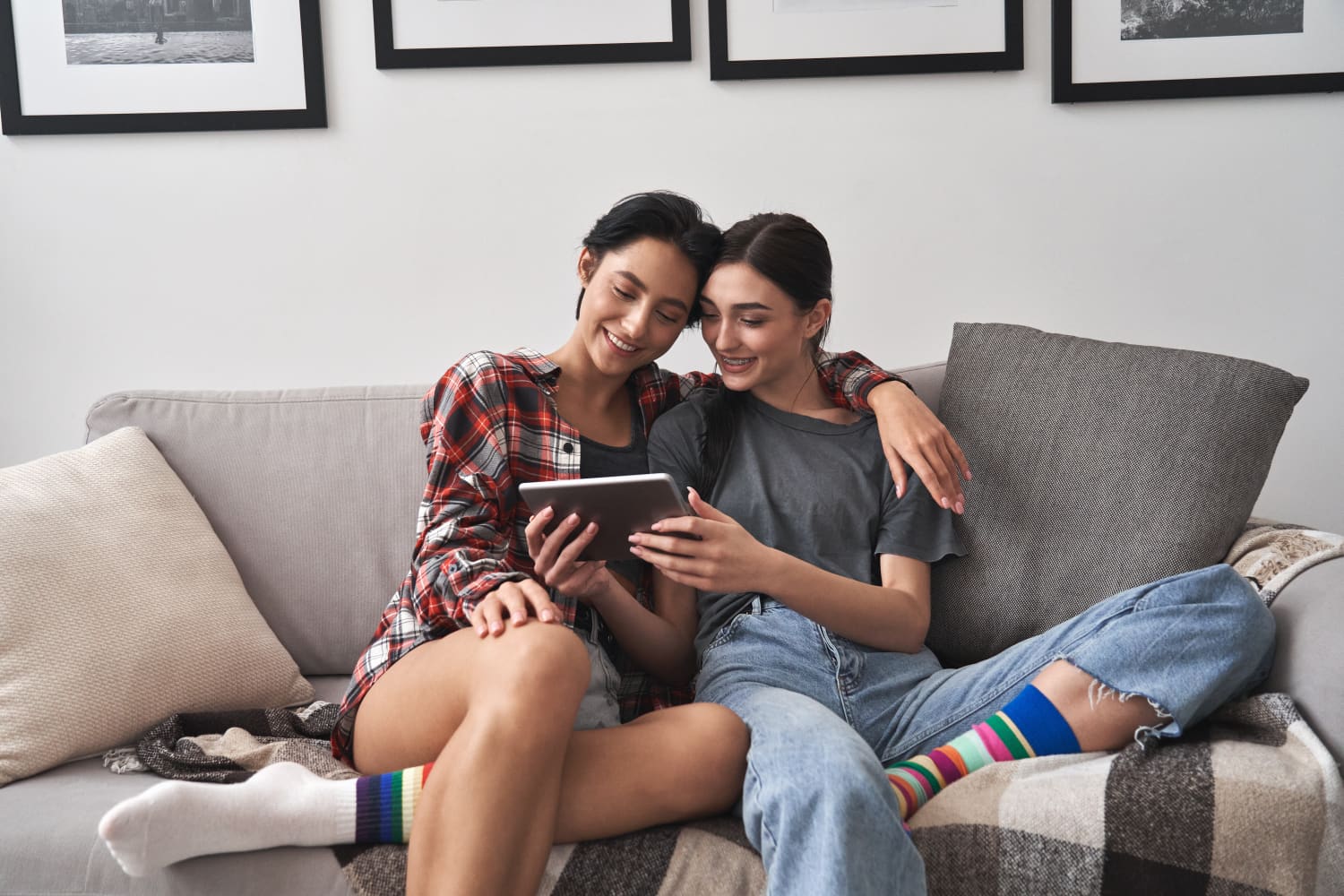
Peek Inside the Mansion from “Meet the Parents” — It’s For Sale Right Now





Beneath its perfectly pink surface, “Legally Blonde” has a heart of gold. The 2001 cult classic quickly solidified itself as one of the most inspirational comedies of the early aughts, boasting a women-led cast that ultimately led to the feminist icon that the universe knows and loves today: Elle Woods.
Played by Reese Witherspoon, the sorority president-turned-Harvard Law student has been serving up positivity and inspiration for women for the last two decades. And a lot of that empowerment happened in Elle Woods’ dorm rooms, which are focal points throughout the film. Whether she was heartbroken in her sorority house in Southern California, or studying hours upon hours to bring justice at Harvard, both rooms represent a tremendous amount of growth, personally and professionally.
To mark the film’s 20th anniversary, Missy Stewart, who worked as the production designer for “Legally Blonde,” spoke with Apartment Therapy about the inspiration behind the dorm rooms and how their designs hold up twenty years later. Plus, she gave the inside scoop on the creative process of designing the entire set, and all the work that went into it.
Apartment Therapy: What are the big differences between Elle’s dorm in the sorority house versus in law school?
Missy Stewart: Elle’s experience at the two colleges were always intended to be a study in contrasts: the sunny, carefree Southern California lifestyle as opposed to the staider New England environs of Harvard. We [went with] California mission style for her fictional sorority house, Delta Nu. Once we chose that location and centered her life there, the campus and dorms followed, emphasizing on the sunny days and greenery, with a colorful palette reflecting that, inside and out. In California, Elle’s colorful and very pink wardrobe suited the surroundings and even sparkled.
At Harvard, she was literally the oddball, who stuck out due to her costume choices and made her journey to acceptance more dramatic. In contrast, the aerials over Harvard and Cambridge, which were the introduction to the second act, show the brick and Federal architecture of New England. Here, we kept the palette more subdued, reflecting the existing campus. In building the dorm and hallway, we decided on a more muted palette of grays and dark woods, based on the actual Harvard dorms.
AT: What was the design inspiration behind her dorm room style?
MS: For her dorm room, we took inspiration from some classic early ’60s designs, but updated them in Elle’s signature color, pink. This was a bold choice at the time as the Saarinen womb chair came in less vibrant colors, and upholstering it really made it more surprising and personal. Because she was a fashion major, we drew from these sources and others: the desk and bookcase were Eames, seminal California designers, and we mixed in some Marimekko fabrics and patterns for pillows, drapes and accessories.
Her journey brings her as a West Coast transplant, with all of her colorful, seemingly frivolous belongings (which of course belie a more sophisticated character), to an unwelcoming atmosphere. People constantly underestimate her character, and she always surprises them, eventually winning them over. Her personal aesthetic choices, which were surprising, fun, intelligent, and warm, definitely exhibited that.
AT: What was the biggest challenge when designing Elle’s dorm rooms?
MS: The pink was sometimes tricky, as it needed to be deep enough to stand up to the lighting, yet not too present, and it competed with skin tones. We did numerous camera tests.
AT: How did you go about sourcing all the items?
MS: We sourced all over Los Angeles, from design showrooms to thrift stores, prop houses and other rental resources available to film designers. I always gather a lot of fabric and wallpaper, and my set decorator usually gets me photographs of furniture from showrooms and rental houses and vintage places.
We custom made the headboard for the bed, and all the drapes and some wallpapers. Again, the intention was a bold but feminine version of ’60s. We custom mixed her signature pink wall color, as what was available at the time was very washed out and muted.
AT: What creative process did you go through to design the set at large?
MS: My process is kind of the same on every film as we’re on such a quick timeline. I read the script and talk with the director, and we form an approach that has to do with the character and their journey. With “Legally Blonde,” it was clear that it was going to be a study in contrasts between Southern California — where she was from and where it was sunny and cheerful, really bubbly and optimistic — and when she got to Harvard, which was a little more cynical.
Before “Legally Blonde,” I had worked on “Good Will Hunting”, so I was really familiar with the Harvard architecture. We decided to build both the dorm rooms, and the concept was that when Elle moved to Harvard in the second act, she would take all of her California stuff with her — her personality, belongings, dog, and all this frilly, pink, girly stuff, because that’s who Elle was. It was the first comedy I’d ever designed, so I decided not to be afraid of color and to load it on, in the California scenes especially.
I make mood boards for each character and each scene. The mood boards for the California dorm rooms had a lot of striking pinks and greens, with leafy elements. The greenery of the outside was always coming into the sorority house, almost like placing her in a rich, jungly atmosphere.
We knew that Reese was going to be wearing a lot of pink and then, once she arrives at college, it sort of tones down and by the time she gets to the courtroom scenes, she’s back to being very pink again. We purposely made the third act courtroom scene very sombre. You may notice that there are little bits of green in there, too, which is a throwback to California, but we also knew the pink would look really great against it.
AT: How did working on Legally Blonde compare to other titles you’ve worked on?
MS: Because of the success of “Legally Blonde,” I got a lot of calls to do other comedies that were female-centered, generally. “Monster-in-Law” was a great movie to work on, with Jane Fonda and Jennifer Lopez. “Win a Date with Tad Hamilton” was also quite fun. Working on comedies can actually be quite challenging because you have to keep it real, but you also have to make the houses more fun. Ultimately, it’s the story and the character that you build on to make a world that seems plausible but also a fun journey.
AT: Did you have a favorite decor item in either of the dorm rooms?
MS: I really liked the big pink chair by Saarinen; it said all you needed to say about her character: comfortable and stylish. And it made a bold statement, just sitting there.
AT: How can someone in 2021 get a similar look for their dorm room?
MS: Anyone wanting to design a room should always pick one item they really love, and center the room on that. Don’t be afraid of color and texture and mixing things up. There is no right or wrong, and a strong sense of self will translate into something surprising. Don’t copy, just follow your instincts. A good sample board of colors and fabrics, with some inspirations is a good starting point.
AT: What would Elle’s dorm room look like in 2021?
MS: If Elle was starting college today, the updated version would include her commitment to the environment, issues of equality, and she would probably be vegetarian. Animal rights and human rights would be competing in her career quest as a lawyer, plus mentoring other young women. Her room would be full of recycled and sustainable products, wood and plants, vintage pieces, and very green — greens in the palette, and green in philosophy.
AT: Are any dorm room trends seen in the film now dated and are there any design details that can translate to today?
MS: A lot of things in the movie were kind of tacky on purpose, and I was surprised that translated as well as it did, because now, of course, that’s a style of its own. Something that’s tacky can be great if it’s intentional.


We independently select these products—if you buy from one of our links, we may earn a commission.
In the past several years, representation of LGBTQ+ lives and experiences have thankfully become plentiful, robust, and diverse — including in film and on television.
Thanks to the tireless work of LGBTQ+ advocates who have pushed for better and more authentic representations of our communities, real and compelling portrayals of LGBTQ+ people are becoming the norm for viewers of all ages. It’s particularly important to recognize the increased representation of transgender and nonbinary characters, who have been created and played by nonbinary and transgender actors — from those in the upcoming new season of “Star Trek: Discovery” to Cartoon Network’s groundbreaking “Steven Universe” series.
Looking for fun new content that centers LGBTQ+ stories and voices? With so many amazing representations of LGBTQ+ characters across platforms and genres, it can be overwhelming to know where to start. (My personal favorite is “Pooch Perfect,” the competitive dog grooming show that had an entire pride episode where contestants — most of whom were LGBTQ+ — talk about their partners, lives as LGBTQ+ people, and coming out, then creating stunning Pride themed grooms for the dogs.)
So, we asked those who are part of the LGBTQ+ community what some of their must-watch recommendations are for LGBTQ+ film and television — here’s what they said:
“I could watch Queer as Folk every year and get something new out of it each time. The characters are complicated, which I can relate to. There are many layers to their relationships. It’s honest in its portrayal of queer life, as well. No straightwashing.” — C. Spencer, Lesbian, Northampton, Massachusetts
Available to watch on Hulu, Apple TV+, and Amazon Prime.
“It’s a drag contest show set at summer camp — super campy, extra inclusive of all identities and body types. Great Drag!” — Becca Yowler, Queer, Galesburg, Illinois
“I recommend ‘Pose’ because it is the ground-breaking show that is intergenerational, intersectional, and deeply entertaining that actually educates us about the LGBTQI+ ballroom culture during the ’80s. Because of ‘Pose,’ LGBTQI+ will become mainstream and is here to stay.” — Rodrick Covington, Black Queer, New York, NY
Available to watch on Netflix and Amazon Prime.
“I don’t think it was the intention of the writers, but it always felt to me like my first time seeing bi/pan representation, plus all the themes mesh well with my many identities and my love of history.” — Karla Lott, Pansexual, Longview, Texas
Available to watch on Amazon Prime.
“I love this show so so much for many reasons! It shows the star athlete of the school in a family with lesbian moms, which is simply SHOWN, not discussed or used as a plot point. The main character feels like an ‘odd duck’ because he feels shy about sex and is embarrassed about it. He’s a teenage boy — he should want sex all the time! His mother is a sex therapist, and she talks to some of the high schoolers about their sexualities, in a way that is validating without being patronizing. Also, there’s a moment where a teen girl is the victim of sexual harassment and has trauma from it. We later see more girls band together with her in solidarity and show her that she is not alone.” — Sarah Wear, Aromantic cis-woman, Portland, Oregon
Available to watch on Netflix.
“Cartoon Network’s groundbreaking ‘Steven Universe’ is a series developed by a non-binary creator has opened doors of queer representation in cartoons that other creators and networks are following.” — Sassafras Lowrey, Queer author, Portland, Oregon
“Trans characters played by trans people with stories outside their transitions — stories that go beyond phobic tropes. ‘Boy Meets Girl’ was a movie I found when I first started asserting my own identity, so seeing Rickey played by an actual trans person, asserting herself and her identity, with what support she has in the small town where she is… it made an impact for me and how I handled my own situation.” — Wulf James-Roby, two spirit/queer, Demi sexual/romantic, Topeka, Kansas
Available to watch on Amazon Prime.
“Why wouldn’t vampires be canonically bi, kinky and *so* extra? It’s like a rated-R ‘Addams Family.’” — Kitty Kintsugi, Nonbinary, Bi/Pan, San Antonio, Texas
Available to watch on Hulu and Amazon Prime.
“As historical fiction, the show does a wonderful job depicting the closet and the talent and dignity lost when people are forced to hide important parts of themselves.” — Allison Moon, Queer lady, Portland, Oregon
Available to watch on Apple TV+ and Amazon Prime.
“This queer rom-com has a heartwarming and surprising focus, which is not about ‘getting the girl,’ but about highlighting the diverse types of love and intimacy that can flourish between human beings — including deep and abiding friendship — when we allow ourselves to love others beyond the narrow confines of what’s allowed by heteronormativity.” — Dr. Nisha Gupta, Queer psychologist, Atlanta, GA
Available to watch on Netflix.
“When my partner and I first found the show ‘Atypical,’ we loved it almost immediately for its unique and much-needed representation of an autistic protagonist. One of our favorite character developments, though, is that of the sister’s, who begins to explore romantic feelings toward her female best friend. Paths taken towards understanding your sexual identity are not always linear, and I love how ‘Atypical’ exemplifies this concept. ” — Austa Somvichian-Clausen, Pansexual, New York, NY
Available to watch on Netflix.
“This show offers an endearing and humorous portrayal of a couple’s growing pains while supporting each other through the complexities and joys of queer love, including: navigating sexual and gender fluidity and the challenges of coming out, supporting each other’s psychological healing and growth from childhood trauma, playfully enjoying sex while seriously exploring the role of sex in building emotional intimacy, and learning to negotiate the evolving needs and expectations of a long-term intimate partnership.” — Dr. Nisha Gupta, Queer psychologist, Atlanta, GA
Available to watch on Netflix.
“It is a true story about a trans sex worker in Spain who becomes a celebrity when she makes it on a late night talk show. It was one of the best things I watched during the pandemic. The cast is amazing, the show is so much fun but heart wrenching at times. I think I cried during the entire last episode. It was that good!” — Gus Constantellis, Gay, Brooklyn, NY
Available to watch on HBO Max.
“‘Why Are You Like This?’ is an Australian satire series that centers around social justice movements including gender equality and LGBTQ+ rights. The characters are utterly relatable as they try to become more conscious of their bias and fight for equality with plenty of road bumps and cringe-worthy self-realizations along the way. The bisexual female lead, Mia, is narcissistic but has so many relatable storylines in the show. Like Mia, I’m also a queer woman of color who has been on a journey to decolonize my pussy for the last few years.” — Lola Méndez, pansexual, currently in Mexico
Available to watch on Netflix.
“My all-time favorite queer film is ‘Show Me Love’ by brilliant Swedish director Lukas Moodysson. It’s such a touching, funny — and empowering — coming -of-age tale, and growing up in a small town in Sweden myself, I can vouch for its authenticity.” — Melinda Martino, Queer, Brooklyn, NY